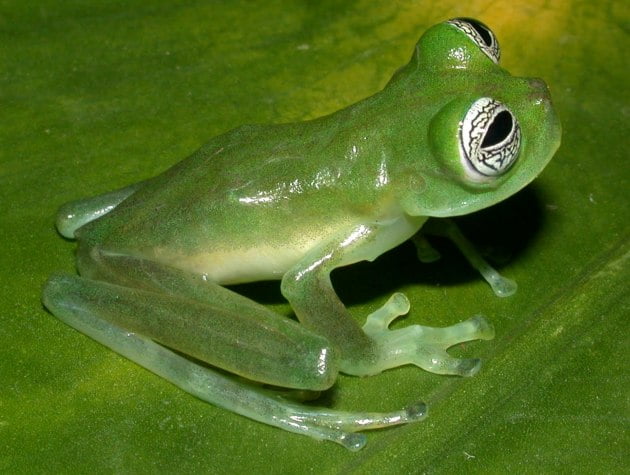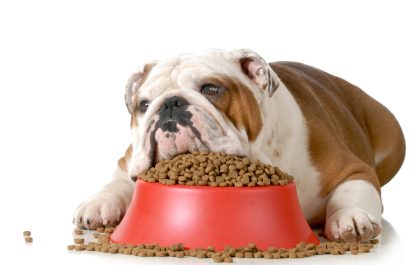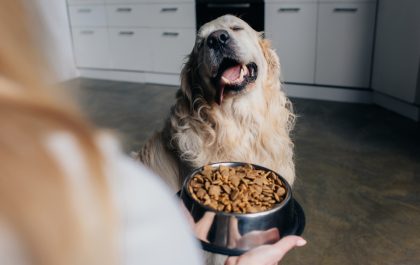Size: Frogs can range from 2.5cm to 30cm in length.
Lifespan: The lifespan of a frog is typically 4-15 years in captivity.
Diet: Frogs eat live insects such as crickets, mealworms, and waxworms.
Housing: Frogs require a terrarium with a secure lid, substrate, hiding places, and a water dish.
Temperature: Frogs require a temperature range of 22-28’C.
Humidity: Frogs require a humidity level of 50-80%.
Lighting: Frogs require a UVB light for 10-12 hours a day.
Cleaning: Frogs require their enclosure to be spot cleaned daily and fully cleaned weekly.
Handling: Frogs should not be handled frequently as it can cause stress.
Health Concerns: Frogs can be susceptible to skin infections, respiratory infections, and parasites.
Are you considering buying a frog as a pet? Frogs can make wonderful pets, but there are a lot of questions to ask and things to consider before you bring one home. If you read on, you’ll discover a lot about the care and maintenance of frogs, including what to look for when buying a frog, how to create a safe and comfortable habitat for them, and how to ensure they get the proper nutrition. With the right information and guidance, you can make sure your frog is happy and healthy for years to come.
Choosing the Right Frog Species as a Pet
Frogs make wonderful pets, but it is important to choose the right species for your home. There are many different types of frogs, each with their own unique characteristics. When it comes to choosing the right frog species as a pet, there are a few key factors to consider.
First, you should consider the size of the frog. Some species can grow quite large, while others remain relatively small. If you have limited space in your home, you may want to opt for a smaller species. Additionally, some frogs require a large tank with lots of space and live plants, while others can live in a smaller tank with fewer amenities.
Second, you should consider the level of care that the frog requires. Some species are more high-maintenance than others, and may require more frequent feedings and more frequent water changes. Additionally, some species may require more specialized food or more frequent veterinary care. Researching the species before making a purchase is a must.
Finally, you should consider the temperament of the frog. Some species are more active and outgoing, while others are more shy and reclusive. Choosing a species that matches your lifestyle and personality is key to ensuring a long and happy relationship with your pet.
Setting Up the Perfect Habitat for Your Frog
Frogs make excellent pets, and setting up the perfect habitat for them is an important part of the process. To create the ideal environment for your frog, you’ll need to consider a few key elements.
The first step is to choose the right tank for your frog. A 10-gallon tank is ideal for most species, as it provides enough space for your frog to move around and explore. You’ll also need to ensure it has a secure lid to prevent your frog from escaping. Next, you’ll want to fill the tank with substrate, such as peat moss or coconut fiber, and add some rocks and plants for decoration. It’s also important to create a water area, such as a shallow bowl or pond, and provide a source of light and heat. Finally, you’ll need to make sure the tank is kept at the right temperature and humidity levels for your frog, which will depend on the species.
Once you’ve set up the perfect habitat for your frog, you’ll need to ensure it is kept clean and well maintained. Regularly check the water levels, temperature and humidity levels, and clean the substrate and tank to prevent the build up of bacteria and fungi. With the right care and attention,
Feeding and Nutrition for Pet Frogs
Feeding and nutrition are an important part of caring for pet frogs. Frogs are carnivores and require a diet of live insects, such as crickets, earthworms, and mealworms. They should be fed daily, and the amount of food should be adjusted depending on the size of the frog. It is important to ensure that all food items are appropriately sized for the frog, as overfeeding can lead to health problems.
Frogs also require vitamins and minerals in their diet. This can be achieved by dusting the food with a vitamin and mineral supplement. It is also important to provide a variety of food items to ensure that the frog is receiving a balanced diet. To ensure that the frog is receiving enough nutrition, it is important to monitor its health and weight. If the frog appears to be losing weight, it may be a sign that it is not receiving enough nutrition. In this case, it is important to adjust the diet accordingly.
Maintaining Proper Hygiene and Health for Your Frog
Frogs make wonderful pets, and like all pets, they require proper care and attention. Maintaining proper hygiene and health for your frog is an important part of their care.
Frogs need clean, filtered water for drinking and swimming in. The water should be changed regularly, and any debris or waste should be removed. It is also important to keep the water temperature at a comfortable level for your frog. A thermometer can be used to monitor the temperature. Additionally, the tank should be cleaned regularly with a mild detergent and warm water.
Frogs also need a healthy diet to stay healthy. They should be fed a variety of live insects such as crickets, mealworms, and waxworms, as well as some fruits and vegetables. Make sure to feed your frog in moderation, as overfeeding can lead to health problems. Additionally, it is important to provide your frog with a safe and secure habitat, free from any potential predators.
Finally, it is important to monitor your frog for any signs of illness. If you notice any changes in your frog’s behaviour or appearance, take them to a vet for a check-up. By taking the necessary steps to maintain proper hygiene and health for your frog, you can ensure that they remain happy and healthy
Handling and Interacting with Your Pet Frog
: Handling and interacting with your pet frog can be a rewarding experience. Frogs are generally quite docile creatures and can be handled with care. When interacting with your pet frog, it is important to ensure that your hands are clean and that you are gentle. It is also important to remember that frogs are sensitive to temperature changes, so it is best to avoid handling them in extreme temperatures.
: When interacting with your pet frog, it is important to remember that they are easily startled. It is best to approach them slowly and quietly, and to avoid sudden movements. Frogs can also be easily stressed, so it is important to keep their environment calm and peaceful. It is also important to provide your pet frog with plenty of space to explore and hide. With a little patience and care, handling and interacting with your pet frog can be a rewarding experience.
Common Mistakes to Avoid When Keeping Frogs as Pets
Frogs can make great pets, and there are a few things to keep in mind when considering them as companions. Unfortunately, there are some common mistakes that can be made when keeping frogs as pets, and it is important to be aware of them in order to ensure a healthy and happy frog.
Firstly, it is important to provide the correct type of enclosure for your frog. A tank that is too small can lead to overcrowding and stress, while a tank that is too large can be difficult to keep warm. The tank should be big enough to provide plenty of space for the frog to move around, and should also be well ventilated. It is also important to make sure the tank is kept clean and free from any chemicals or toxins, as these can be harmful to the frog.
Secondly, it is important to provide the right type of food for your frog. It is best to feed your frog a diet of live insects, such as crickets, mealworms, and waxworms. Avoid feeding your frog processed foods, as these can be unhealthy and lacking in nutrition. In addition, it is important to provide a variety of foods, as this will help to ensure your frog is getting the nutrients it needs.
Legal Considerations for Owning a Pet Frog
Owning a pet frog can be a rewarding experience, but there are a few legal considerations to keep in mind. In Australia, it is illegal to keep frogs as pets without a licence from the appropriate state authority. This is because some species of frogs are listed as threatened and need to be protected in their natural environment. It is important to research the laws in your state to make sure you are complying with the relevant regulations.
In addition to the legal requirements, pet owners should also be aware of the animal welfare laws in their state. This includes providing a suitable habitat for the frog, as well as ensuring that it is fed a balanced diet and that its health is monitored regularly. If a pet frog is not given the proper care and attention, it may become sick or suffer from stress. It is important to be aware of the risks associated with owning a pet frog and to take the necessary steps to ensure its wellbeing.
Final Thoughts
frogs can make wonderful pets, but it is important to do your research before bringing one home. When choosing the right species for your home, consider the size, level of care, and temperament of the frog. It is also important to set up a safe and comfortable habitat for your frog, and to provide it with the proper nutrition. With the right care and attention, your frog can be a happy and healthy companion for years to come.
Frogs as Pets FAQs
Frogs require specific care, but they are not necessarily difficult to take care of. It is important to research the specific species’ care requirements before getting a pet frog.
It depends on the species. Some species are social and can be housed together, while others are solitary and should be housed alone.
Some species of frogs can be quite vocal and make a variety of sounds, while others are quiet.
Yes, most pet frogs require a source of water for swimming and soaking.
The lifespan of a pet frog can vary greatly depending on the species. Some may only live a few years, while others can live up to 20 years or more with proper care.
Spot clean your frog’s habitat daily and do a full clean every 2-4 weeks.
Again, the feeding frequency will depend on the species. In general, most pet frogs should be fed 2-3 times a week.
A frog habitat should mimic their natural environment as closely as possible. This includes providing a water source, hiding places, and appropriate temperature and humidity levels.
The diet of your pet frog will depend on the species. Most pet frogs eat insects, such as crickets and mealworms, but some may also eat small rodents or fish.
Some popular pet frog species include White’s tree frog, Pacman frog, Red-eyed tree frog, and African dwarf frog.





